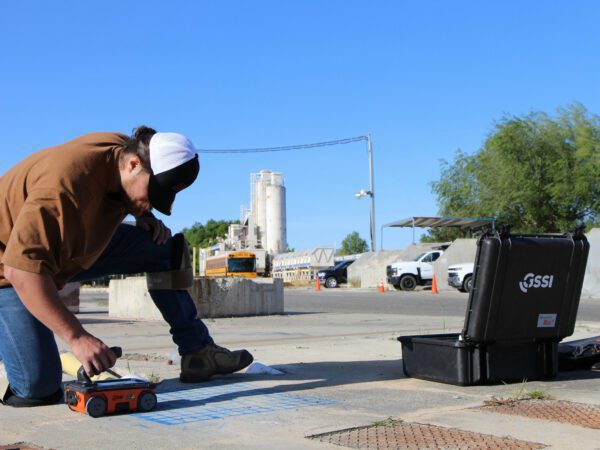Enhance Project Performance with RainierGPR Concrete Scanning Solutions
Enhance Project Performance with RainierGPR Concrete Scanning Solutions
Blog Article
Discovering the Depths: A Comprehensive Guide to Concrete Scanning and Its Diverse Applications
In the world of building and framework advancement, the precise procedure of concrete scanning holds an essential duty in guaranteeing the architectural stability and security of projects. As modern technology remains to advance, the applications of concrete scanning have broadened much beyond mere surface-level evaluations. From discovering rebar and post-tension cable televisions to mapping out voids and channels concealed within concrete structures, the capacities of modern scanning methods are both outstanding and important. Nevertheless, truth depth of concrete scanning's possible reaches also further, branching right into unforeseen fields and triggering innovative remedies. The interconnected internet of opportunities that concrete scanning presents is not just interesting but likewise important for the advancement of different markets.
Importance of Concrete Scanning
Comprehending the significance of concrete scanning is important in ensuring the safety and security and honesty of frameworks throughout building and construction and restoration projects. Concrete scanning uses advanced innovations such as ground-penetrating radar (GPR) and electromagnetic induction to identify embedded things, voids, or other anomalies within concrete frameworks - RainierGPR Concrete Scanning. By carrying out complete scans before exploration, reducing, or coring right into concrete, building groups can stay clear of unexpected damages to crucial structural components like rebar, channels, or post-tension cable televisions. This positive technique not just avoids costly repairs and project delays but additionally enhances overall building security by minimizing the threat of architectural failings or collapses due to endangered stability.
Additionally, concrete scanning plays an essential function in making sure compliance with building regulations and regulations that mandate the security of existing architectural elements throughout building tasks. By accurately drawing up the inner composition of concrete, scanning modern technologies allow construction experts to make enlightened choices that support the structural stability and durability of buildings and framework projects. In significance, the significance of concrete scanning hinges on its ability to safeguard both the structural honesty and the personnel associated with building and construction ventures.
Technologies Used in Concrete Scanning
Concrete scanning depends on sophisticated modern technologies such as ground-penetrating radar (GPR) and electromagnetic induction to precisely spot embedded items and anomalies within concrete frameworks. Ground-penetrating radar runs by discharging high-frequency electro-magnetic waves right into the concrete. When these waves come across different products or gaps within the concrete, they jump back to the surface, permitting the GPR system to create an in-depth subsurface picture. This innovation is specifically reliable in situating rebar, post-tension cables, avenues, and other things installed in concrete.
Electro-magnetic induction, on the other hand, works by generating electromagnetic areas around a concrete framework through a transmitter coil. When steel objects are existing within the concrete, they interfere with these magnetic fields, causing eddy currents to stream via the metal. By measuring the adjustments in the magnetic fields with a receiver coil, the system can pinpoint the area of metallic things in the concrete.
These advanced innovations play a vital duty in non-destructive testing, making certain the safety and security and stability of concrete frameworks in numerous sectors.
Applications in Building Industry
Within the building and construction sector, concrete scanning innovation discovers diverse applications that improve project efficiency and safety. Additionally, concrete scanning is utilized for situating spaces, such as air pockets or areas of degeneration within concrete, which can compromise the find total stamina of a structure. Concrete scanning plays a crucial function in top quality Read Full Article control by confirming the thickness of concrete covers over support, making certain conformity with style specifications and requirements.

Security Benefits of Concrete Scanning
In the world of building and construction safety, the application of concrete scanning modern technology offers a vital benefit in preemptively determining possible dangers and fortifying architectural honesty. By making use of advanced scanning techniques such as ground-penetrating radar (GPR) and electro-magnetic induction, construction teams can properly situate rebar, post-tension cords, channels, and other surprise objects within concrete frameworks. This aggressive technique significantly minimizes the danger of unintentional strikes throughout drilling, cutting, or coring activities, consequently preventing expensive damages, injuries, and job delays.
Additionally, concrete scanning improves employee security by offering real-time details regarding the architectural condition of concrete elements. By addressing prospective safety and security problems immediately, concrete scanning adds to producing a safe functioning environment and alleviating the chance of architectural failures or accidents on building websites.
Future Trends in Concrete Scanning
Arising improvements in scanning innovation are positioned to reinvent the area of concrete assessment and analysis. By taking advantage of the power of AI, these systems can analyze huge quantities of data accumulated during scanning procedures to supply more precise and detailed insights right into the condition of concrete structures.
An additional considerable fad is the advancement of even more mobile and straightforward scanning gadgets. Miniaturization of scanning equipment allows for simpler access to constrained rooms and remote places, making assessments a lot more extensive and reliable. Furthermore, developments in wireless interaction innovations make it possible for real-time data transfer and analysis, check helping with quicker decision-making processes.
Moreover, there is an expanding concentrate on sustainability in concrete scanning modern technologies - RainierGPR Concrete Scanning. Producers are significantly integrating eco-friendly products and energy-efficient features into their devices to minimize ecological influence. These future trends are readied to enhance the effectiveness, accuracy, and sustainability of concrete scanning methods, shaping the industry's future landscape
Verdict
In conclusion, concrete scanning plays an essential function in the building and construction sector by making certain the security and effectiveness of numerous jobs. As modern technology advances, the future of concrete scanning holds appealing developments for improving construction processes.

Report this page